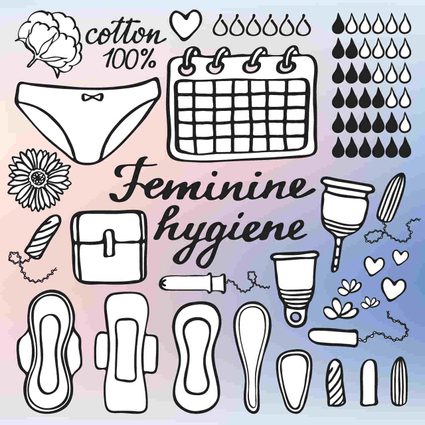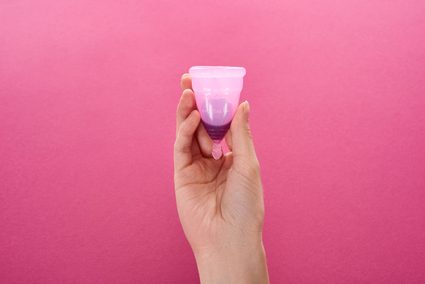Period Products Cost Calculator
Every day, about . 🩸 And nearly 80% of them will have to choose, during their lifetime, between menstruation products, such as tampons or pads, and buying necessities.
Yet, the times and mindsets are changing, and hopefully, notable shifts are made or about to be made. At the end of the last year, .
And the movement spreads further. From the 19th April 2021, followed the trend and launched a new project. A coupon is available through the Lidl Plus app, allowing once a month to exchange it for a box of sanitary pads or tampons.
In , on the other hand, you can get a discreet envelope with period products, if you ask for Sandy. It seems like a nice kick-off towards fighting period poverty and a turn on menstruation in public space.
The US remain on the other team. At the moment, 35 states impose a sales tax 💸 on menstruation sanitary products, considering them luxury items, also described as nonessential. Yet, aren't they as necessary as access to toilet paper or everyday groceries?
On the 20th October 2020, the US celebrated its second National Period Day to help raise awareness about period poverty. It's about bloody time!

Period poverty around the world
Period poverty is a thing. In of reproductive age, nearly half of them have experienced menstruation obstacles. 👩👧 The problem is a lack of access to toilets, menstrual education, hand-washing options, and, finally, sanitary products.
Around 60% of women have had to organize their budget and put an item back on the shelf to afford menstrual products.
More than 70% of the respondents have had to use an alternative, such as toilet paper, when they've been surprised by an early period and didn't have access to sanitary products. Menstruation education is low, and in some regions, having a period is a cause of shame and stigmatization in society's eyes.

How much does it cost to have a period?
Studies have determined that a period costs approximately 10 dollars or 9 pounds per month, depending on the country. This number includes tampons, pads, or menstruation cups, depending on which the woman uses, and eventually - painkillers. The amount of money varies from woman to woman due to differences in the amount of blood and pain experienced. Finally, we should mention certain medical conditions, such as endometriosis or anatomical differences, that can substantially impact a woman's need for sanitary products and medicine.
Yet, there are some other costs we don't tend to discuss daily:
- Birth control 💊 — the only thing that could stop you from bleeding every month. However, it costs more than $15-$50 a month. Always consult a physician before you decide to start the pill.
- Productivity 🖥️ — mentioned above, but worth repeating. due to cramps, fatigue, pain, and general malaise. Such a state can last from one to three days per menstruation. Two years ago, the period tracker app, Clue, found that 18% of US women have missed school, work, or an event due to their period. The reason was not pain, fatigue, or any of the above causes — they didn't go because they were afraid of someone finding out they were menstruating.
- Laundry 🧺 — even if you're super careful, wear bigger pads, or try double-protection, you can still leak. And the additional expense of changing sheets, washing underwear, and sometimes buying new clothes when the blood does not come out.
Shopping inequalities
At this point, we need to mention the pink tax - not a literal tax, but how the same object often costs more just because it's marketed towards women. The name pink tax comes from the fact that most of the affected products are pink. Products marketed for women, such as cosmetics (13%!!!), clothes (men pay 8% less to get dressed), tend to be more expensive than those for men. Interestingly, the differences are visible already in the prices of toys for kids - .
And here comes one more thing - there is an actual pay gap between the two genders, which also varies not only between men and women but also between races.
All these reasons make us wonder why so many women have to struggle to meet the necessities of life that are not even a choice?
Changing the law
It's just hit all major news outlets - the Scottish Parliament voted for free period products for the whole country.
What does this mean for women and girls?
💡 These goods will be available free of charge in public buildings, including universities and schools. It's a huge step for all women's rights supporters and fighters for gender equality. Also, a real life-changer for those struggling with poverty.
The program should cost around £8.7 million a year from 2020. Is that a lot? Let's recalculate it for one person - as mentioned above, a woman spends on average 10 dollars per month. Supposedly, periods happen between 12 and 52, which means more than 450 periods in a single lifetime.
That's almost 5000 dollars spent on hygienic products, just for the simple reason you are a woman and have no alternative but to bleed. Not to mention the losses in productivity and relaxation during your monthly menstruation.
Eco-friendly menstruation? 🌴
So you feel pain, bleed, need to buy sanitary products (not everywhere, thank you, Scotland!), and now you also need to think about the environment? We're not here to put pressure on you, we're just carrying out some advice on making this world a cleaner place. It's similar to using reusable eye pads - just switching to an eco-friendly option is an excellent step forward!
One pad is equal to four plastic shopping bags, and tampons are not to recycle due to the plastic applicator.
Yet, there are some solutions:
- A menstrual cup, a tiny device made of rubber or silicone. You put it in your vagina, where it collects blood. And it can stay there, without needing to be changed, for up to 12 hours. In total, you can use one cup for six months to 10 years, depending on what it's made of. How comfortable!
- Reusable cloth pads - made of organic cotton, estimated to last up to five years. To wash a cloth pad, toss it in the washing machine.
How many pads do you need? Most brands recommend about a dozen pads. For example:
- Three to six pantyliners;
- Six to twelve day pads; and
- One to three overnight pads.
- Reusable tampon applicators.
- Period pants.
Give yourself some time, try them out, and find the one that suits you best.

Period products cost calculator
This tool helps you estimate the amount of money spent on sanitary products over a chosen time, based on the essential supplies a woman needs during menstruation.
To get your result, follow the intuitive steps explained below:
- Choose what period product you use most: tampons, pads, reusable pants, or menstrual cups.
2a. If the product is either tampons or pads, input:
- The length of your menstruation cycle (on average between 21 and 35 days);
- Number of tampons/pads you use during one period;
- The number of items in one package; and
- The cost of one pack of pads/tampons 💰
2b. If the product is reusable pants or a menstrual cup, fill in:
- The lifetime of the product - on average, it's five years for pads and between 6 months and ten years for a cup; and
- The price of the product 💰
- How long do you want to calculate the cost over 📅:
- A month;
- Six months;
- A year;
- Five years;
- Ten years; or
- A lifetime.
✅ And that's all, after filling in all the fields, you get your result - the cost of buying sanitary products over a chosen amount of time.
How to save up? 🌺 Reusable products, such as menstruation cups or cloth pads, cost less and have a smaller impact on the environment. Of course, you'll need to wash them regularly and remember to carry them around with you. Not so easy, but while we wait for other governments to follow the Scottish lead, maybe it's worth considering?
🙋 We have many other calculators that you can use in your everyday life. Before you go, check out the chronological age calculator to find out how old you are to the day. The bra size calculator will help you buy a perfect bra. Finally, with the speed calculator, you can calculate your average speed whenever you need!